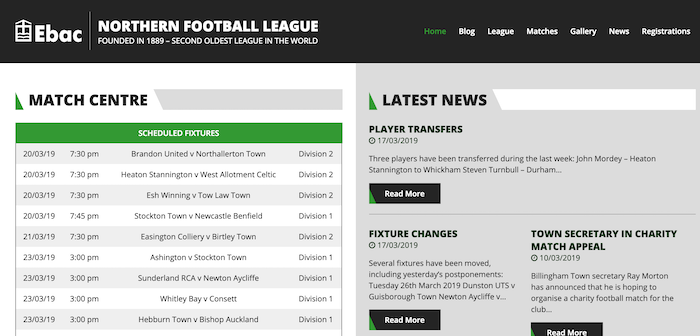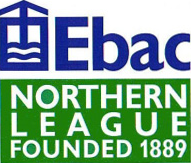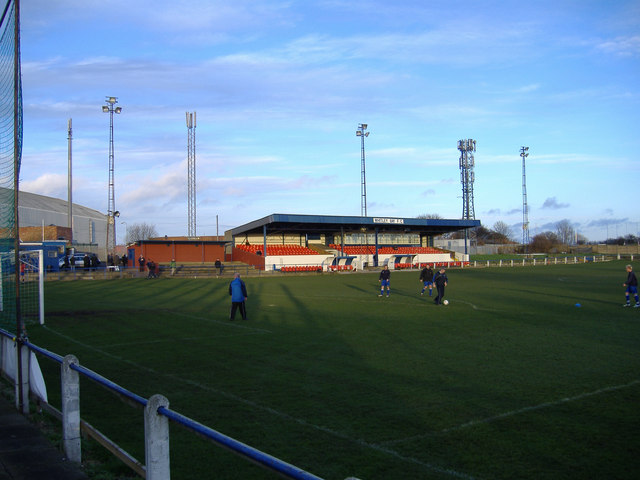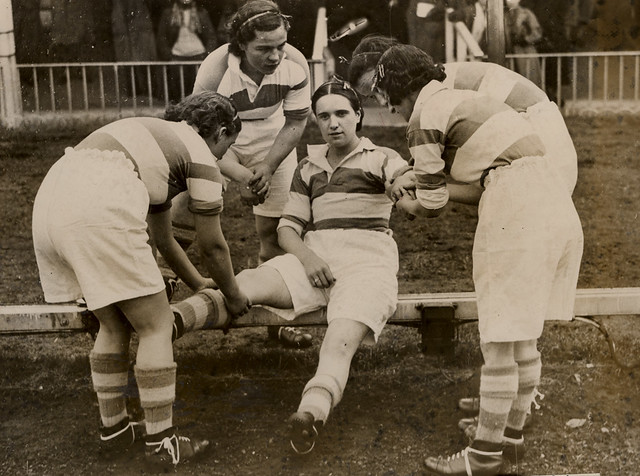Topics > Sport > Football > Northern Football League
Northern Football League
The Northern Football League was founded in 1889. it is the 2nd oldest surviving football league in the world, only the Football League itself is older. It has 2 Divisions.
At 2016/17 the teams in the league were:
| Division 1
Chester-le-Street Town FC Consett AFC Dunston UTS FC Guisborough Town FC Jarrow Roofing BCA FC Marske United FC Morpeth Town FC Newcastle Benfield FC Newton Aycliffe FC North Shields FC Penrith FC Ryhope Colliery Welfare FC Seaham Red Star FC Shildon AFC South Shields FC Sunderland RCA FC Washington FC West Allotment Celtic FC West Auckland Town FC |
Division 2
Alnwick Town FC Bedlington Terriers FC Billingham Synthonia FC Billingham Town FC Blyth Town FC Brandon United FC Darlington Railway Athletic FC Durham City AFC Easington Colliery Fc Esh Winning FC Heaton Stannington FC Hebburn Town FC Northallerton Town FC Norton & Stockton Ancients FC Ryton & Crawcrook Albion FC Stockton Town FC Team Northumbria FC Thornaby FC Tow Law Town FC Whickham FC |
The Northern League is a men's football league in north east England for semi-professional and amateur teams. Having been founded in 1889, it is the oldest surviving football league in the world after the Football League.
It contains two divisions; Division One and Division Two. Division One sits on the ninth tier of the English football league system, five divisions below the Football League. These leagues cover County Durham, Northumberland, Tyne and Wear, northern Cumbria and the northern half of North Yorkshire.
One of the top three teams of Division One may be eligible for promotion to Division One North of the Northern Premier League, subject to certain criteria.
History
The Northern League ran as one of two major amateur competitions (with the Isthmian League) in tandem with the professional Football League, Southern League and, since 1968, the Northern Premier League.
In 1974, amateur status was abandoned by the Football Association and amateur leagues like the Northern had to find a place in the overall structure of non-League football. Unlike its southern equivalent the Isthmian League who became a feeder in 1982, the Northern League rejected repeated invitations to become a feeder league to the Alliance Premier League, later the Conference, when that league was created in 1979.
Ultimately, the Northern League remained out of the football pyramid until 1991, a decision that proved very costly to its status. The league declined throughout the 1980s as its leading clubs defected to other leagues within the football pyramid, such as the Northern Counties East Football League.
When the Northern League was finally forced into the pyramid, the opportunity to become a feeder league to the Conference had long passed and the Northern League was forced to become a feeder league to the lower division of the Northern Premier League, two tiers below the Conference.
The League suffered a further blow to its prestige in 1995 when the Football Association limited the entry to the FA Trophy to the first three steps of the pyramid thereby disqualifying the Northern League's clubs and those in equivalent competitions from competing for the FA Trophy. Northern League clubs now compete for the FA Vase.
The League had an unusual sponsorship deal put in place by Brooks Mileson, owner of the Albany Group, who were its sponsors in 2003. In that year, Mileson announced that he had created a trust which would continue to sponsor the league throughout his lifetime and that of his sons. In 2008, however, the league announced that this sponsorship had come to an end, and it held a raffle to determine its next sponsor. Interested parties were invited to buy a stake in the raffle for £250. The winning stake was held by a local training company and the league was known as the skilltrainingltd Northern League from the 2008–09 season until the 2011–12 season. The league is currently sponsored by dehumidifier manufacturer Ebac.
Level 11 clubs from the Northern Football Alliance, Teesside Football League and Wearside Football League may apply for promotion into the 2nd Division.
Visit the page: Northern Football League for references and further details. You can contribute to this article on Wikipedia.

from http://www.northernfootballle…
Northern League
- Official website of the League
Added by
Simon Cotterill

from https://en.wikipedia.org/wiki…
Northern League logo
- Seek permission to reuse. Image c/o Wikimedia Commons "It is believed that the use of low-resolution images on the English-language Wikipedia, hosted on servers in the United States by the …
Added by
Simon Cotterill

Co-Curate Page
Whitley Bay F.C.
- Overview About Whitley Bay F.C. Map Street View Whitley Bay Football Club are a team in the Northern Football Leage. Nicknamed the 'Seahorses', the team's home ground is Hillhead Park …

Co-Curate Page
Crook Town A.F.C.
- Crook Town Association Football Club was founded in 1889. Nicknamed the 'Black and Ambers'. The team's home ground is the Sir Tom Cowie Millfield Ground in Crook, County Durham. The …


from http://www.northernfootballle…
Northern League
- Official website of the League
Added by
Simon Cotterill

from https://en.wikipedia.org/wiki…
Northern League logo
- Seek permission to reuse. Image c/o Wikimedia Commons "It is believed that the use of low-resolution images on the English-language Wikipedia, hosted on servers in the United States by the …
Added by
Simon Cotterill

Co-Curate Page
Whitley Bay F.C.
- Overview About Whitley Bay F.C. Map Street View Whitley Bay Football Club are a team in the Northern Football Leage. Nicknamed the 'Seahorses', the team's home ground is Hillhead Park …









